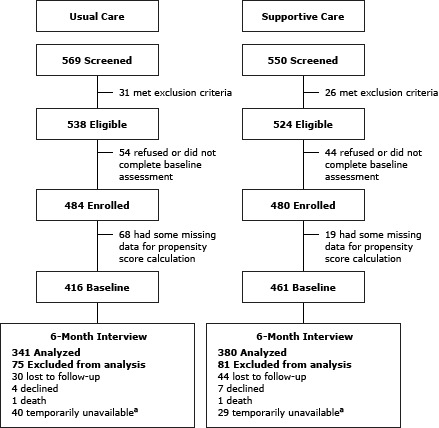Figure.

Consolidated Standards of Reporting Trial (CONSORT) diagram of sample of study participants drawn from type 2 diabetes patients identified in database and clinic records at safety-net clinics where they sought treatment, Los Angeles County, California, 2011–2013. Propensity scores were used to determine the probability of treatment assignment conditional on observed baseline characteristics. Some patients were excluded because they were temporarily unavailable (eg, they were out of the state or country, it was not a good time to talk, their telephone was disconnected).
